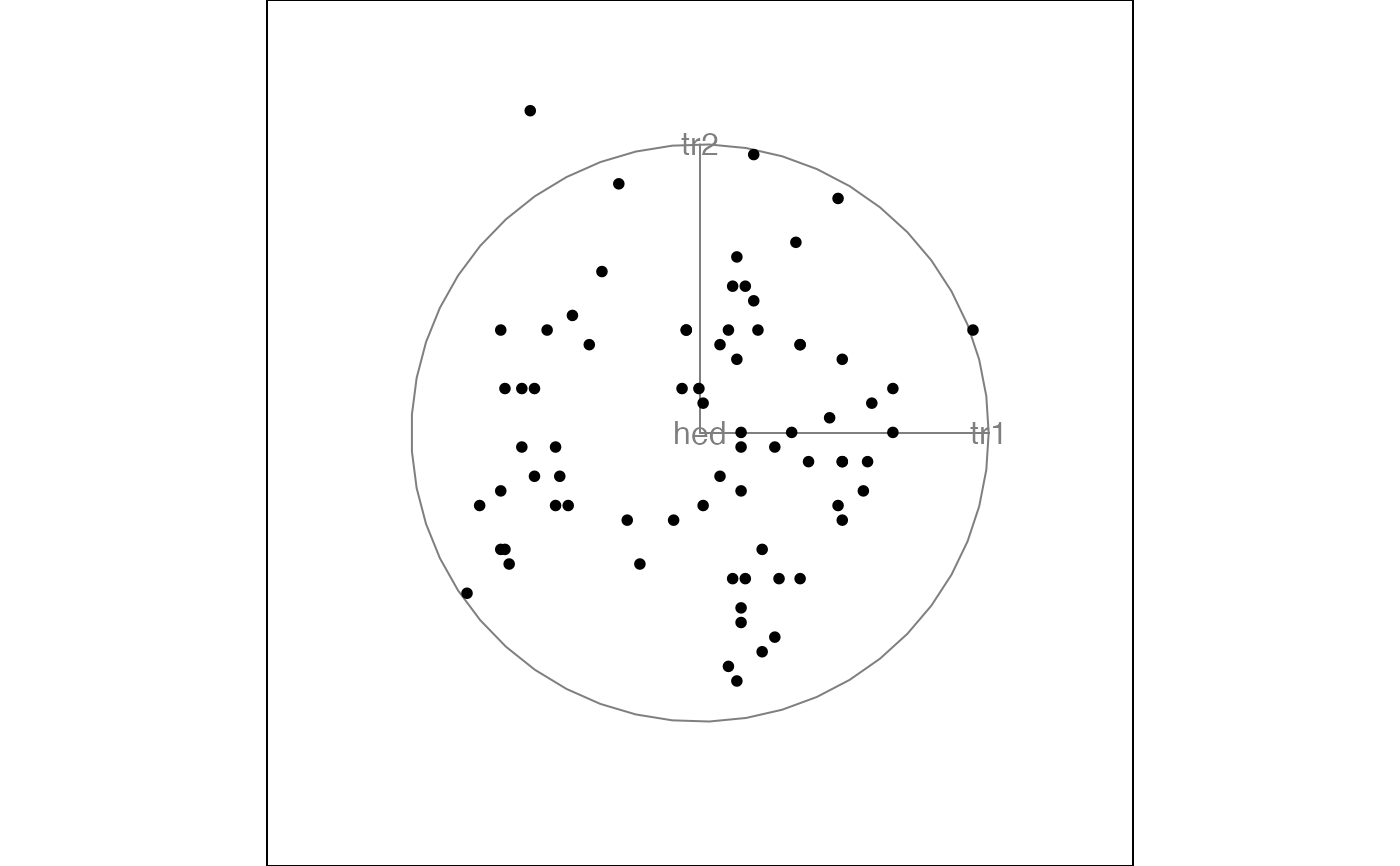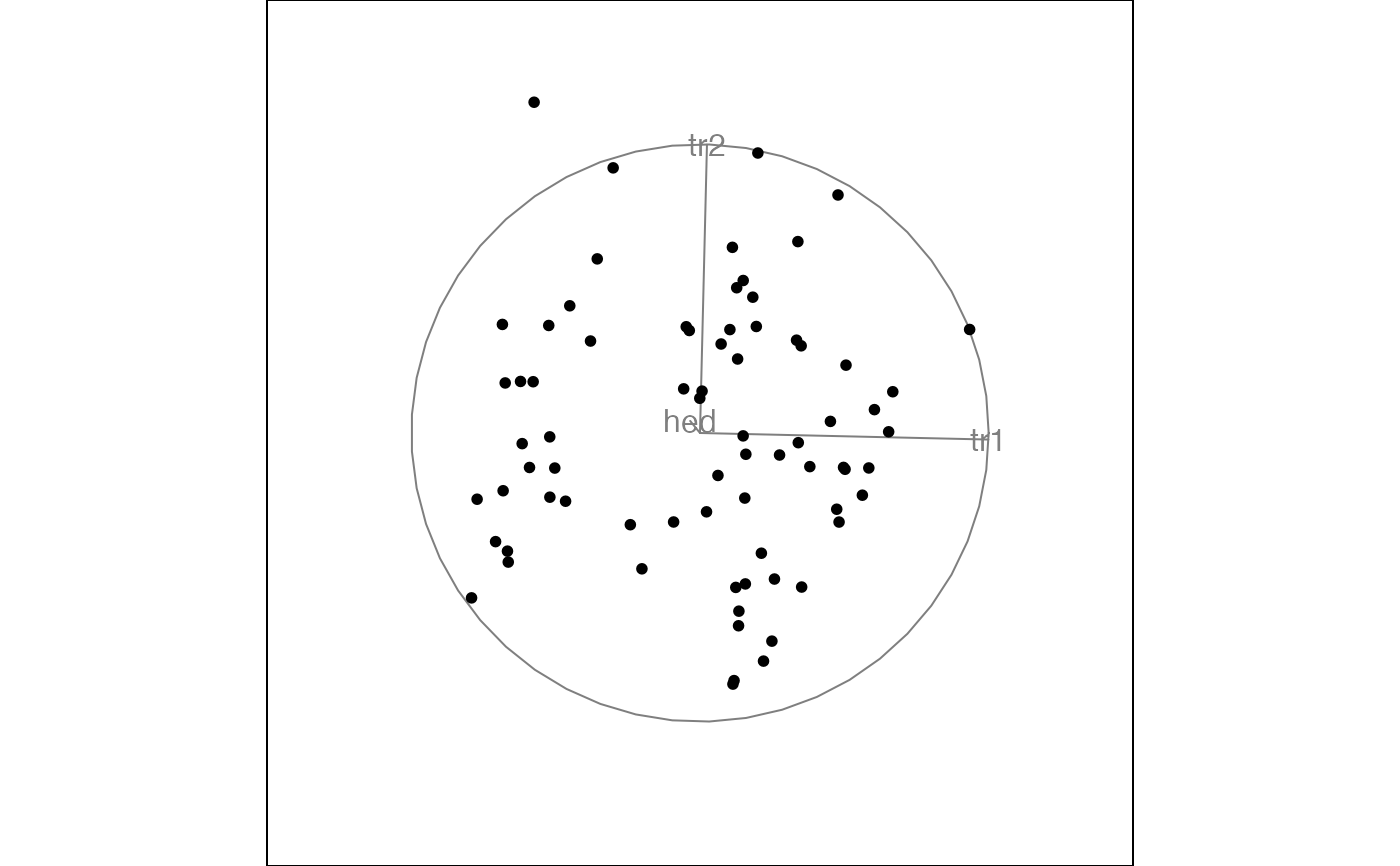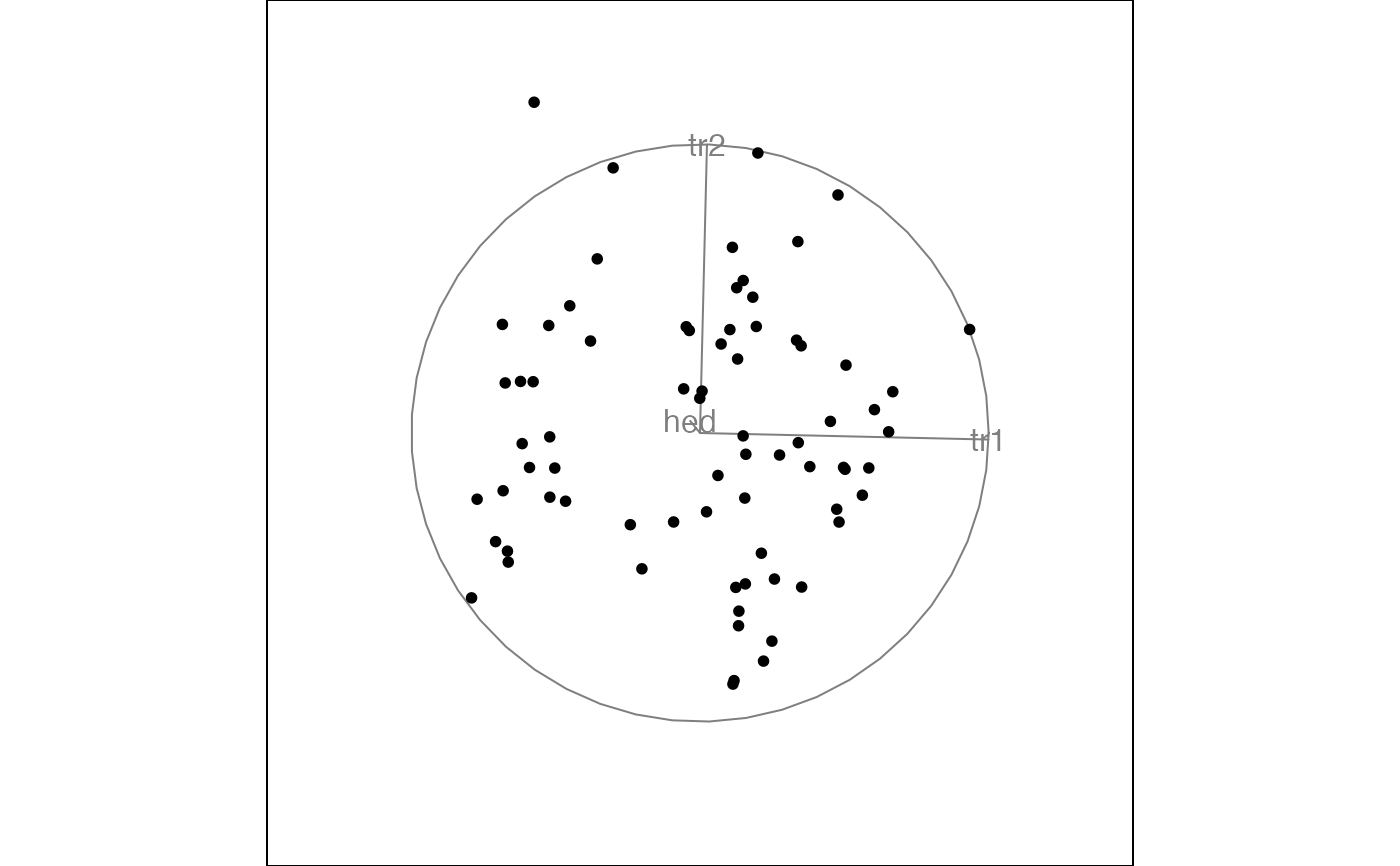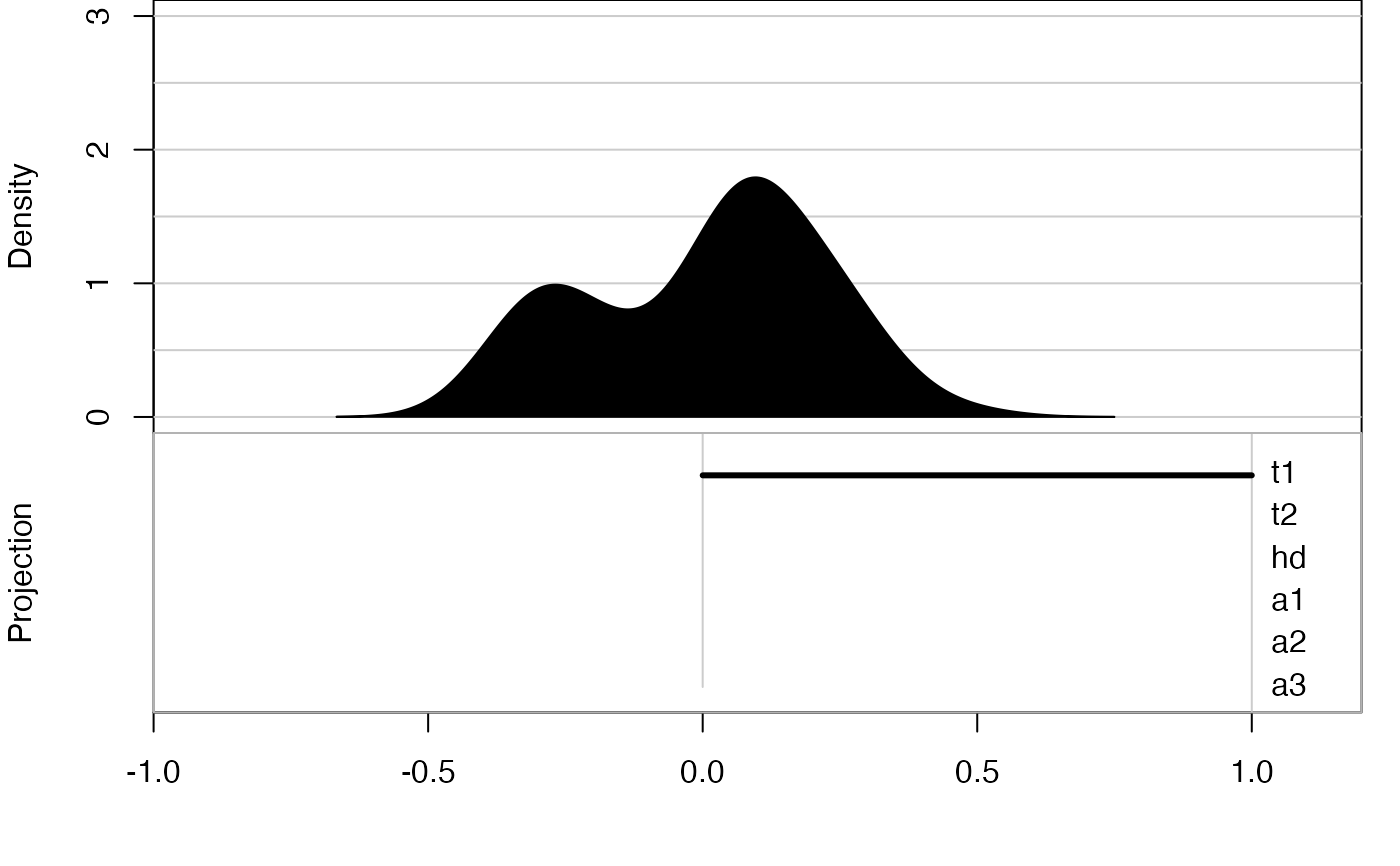
A planned tour path using frame-to-frame interpolation.
Source:R/givens_path.R
planned_tour_givens.RdThe planned tour takes you from one basis to the next in a
set order. Once you have visited all the planned bases, you either stop
or start from the beginning once more (if cycle = TRUE).
Arguments
- basis_set
the set of bases as a list of projection matrices or a 3d array
- cycle
cycle through continuously (
TRUE) or stop after first pass (FALSE)
Details
Usually, you will not call this function directly, but will pass it to
a method that works with tour paths like tour::animate(),
tourr::save_history() or tourr::render().
See also
The tourr::little_tour(), a special type of planned tour
which cycles between all axis parallel projections.
Examples
library(tourr)
twod <- save_history(flea[, 1:3], max = 5)
#> Converting input data to the required matrix format.
str(twod)
#> num [1:3, 1:2, 1:5] 1 0 0 0 1 ...
#> - attr(*, "data")= num [1:74, 1:3] 0.467 0.263 0.773 -0.145 -0.213 ...
#> ..- attr(*, "dimnames")=List of 2
#> .. ..$ : chr [1:74] "1" "2" "3" "4" ...
#> .. ..$ : chr [1:3] "tars1" "tars2" "head"
tourr::animate_xy(flea[, 1:3], woylier::planned_tour_givens(twod))
#> Converting input data to the required matrix format.
#> Using half_range 3.5

 tourr::animate_xy(flea[, 1:3], woylier::planned_tour_givens(twod, TRUE))
#> Converting input data to the required matrix format.
#> Using half_range 3.5
tourr::animate_xy(flea[, 1:3], woylier::planned_tour_givens(twod, TRUE))
#> Converting input data to the required matrix format.
#> Using half_range 3.5

 oned <- tourr::save_history(flea[, 1:6], tourr::grand_tour(1), max = 3)
#> Converting input data to the required matrix format.
tourr::animate_dist(flea[, 1:6], woylier::planned_tour_givens(oned))
#> Converting input data to the required matrix format.
#> Using half_range 4.4
oned <- tourr::save_history(flea[, 1:6], tourr::grand_tour(1), max = 3)
#> Converting input data to the required matrix format.
tourr::animate_dist(flea[, 1:6], woylier::planned_tour_givens(oned))
#> Converting input data to the required matrix format.
#> Using half_range 4.4

